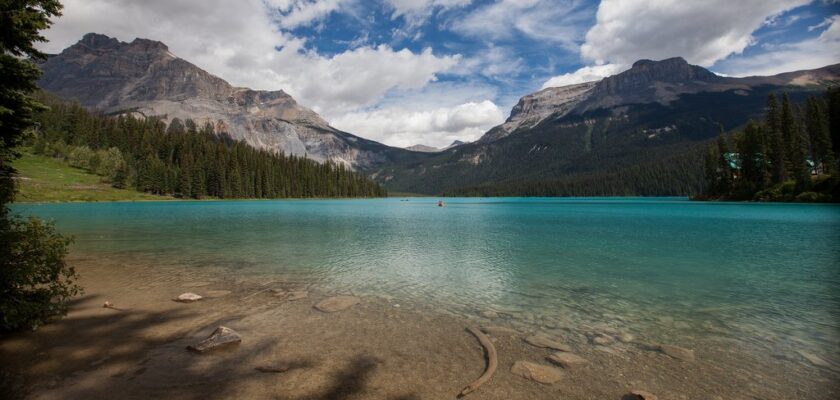Yoho National Park
Yoho National Park is one of British Columbia’s most beautiful national parks. The park is set amongst mountains and idyllic lakes surrounding the Yoho and Kicking Horse Rivers. Buy a supply of groceries in the neighboring town of Fields and drive back a bit to the turn sign for Emerald Lake. After entering the woods, there’s a nice picnic spot at the “natural bridge” – a massive slab of stone where the swift Kicking Horse River has carved its way through. Moose often come to the salt lick stone behind the bridge.
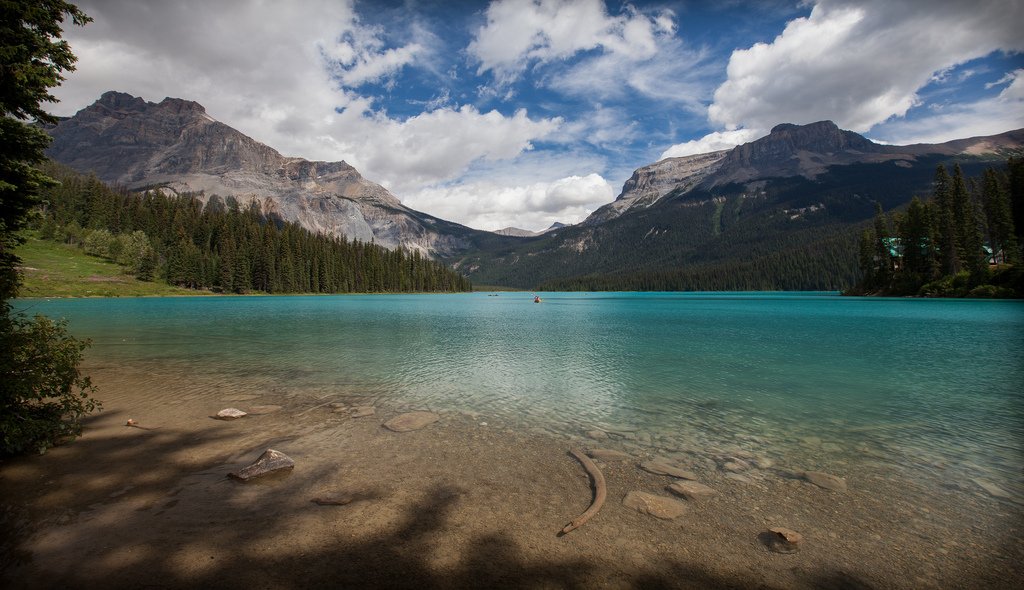
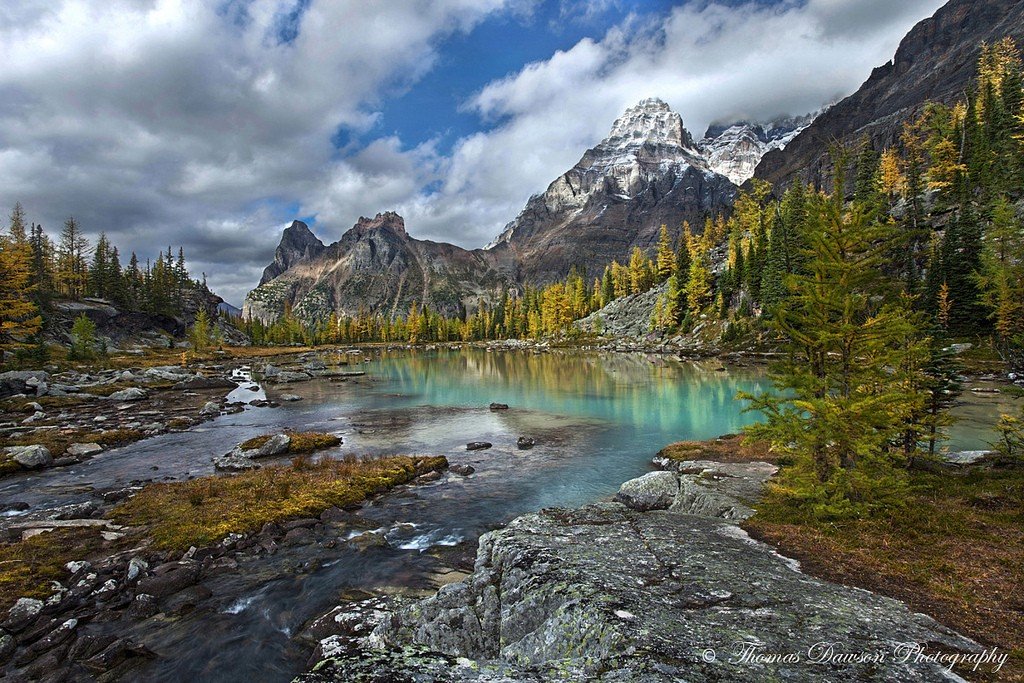
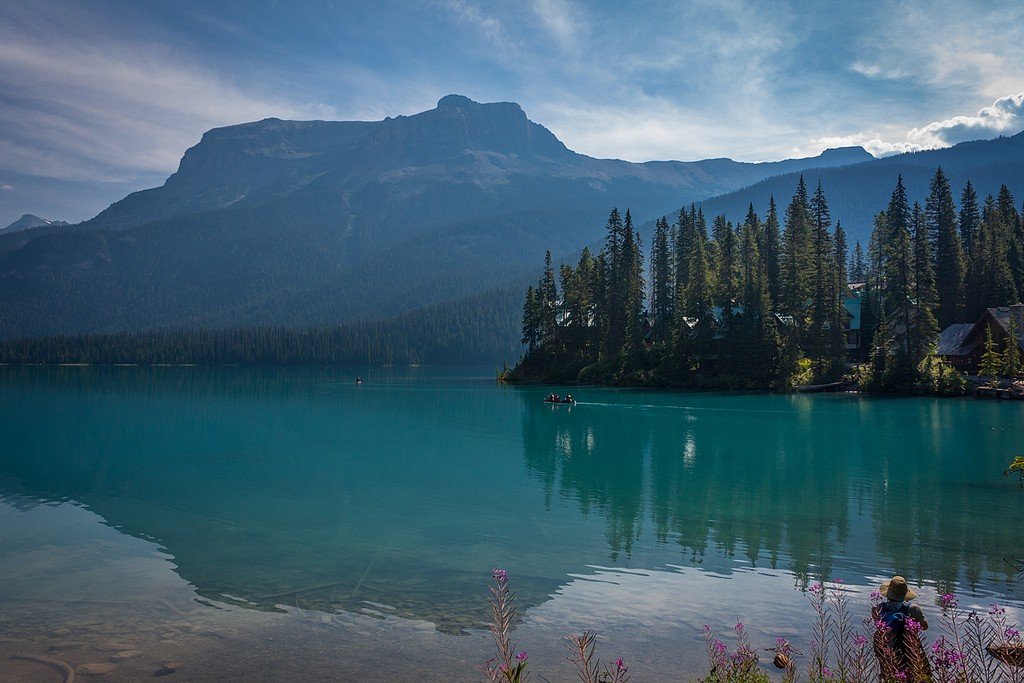

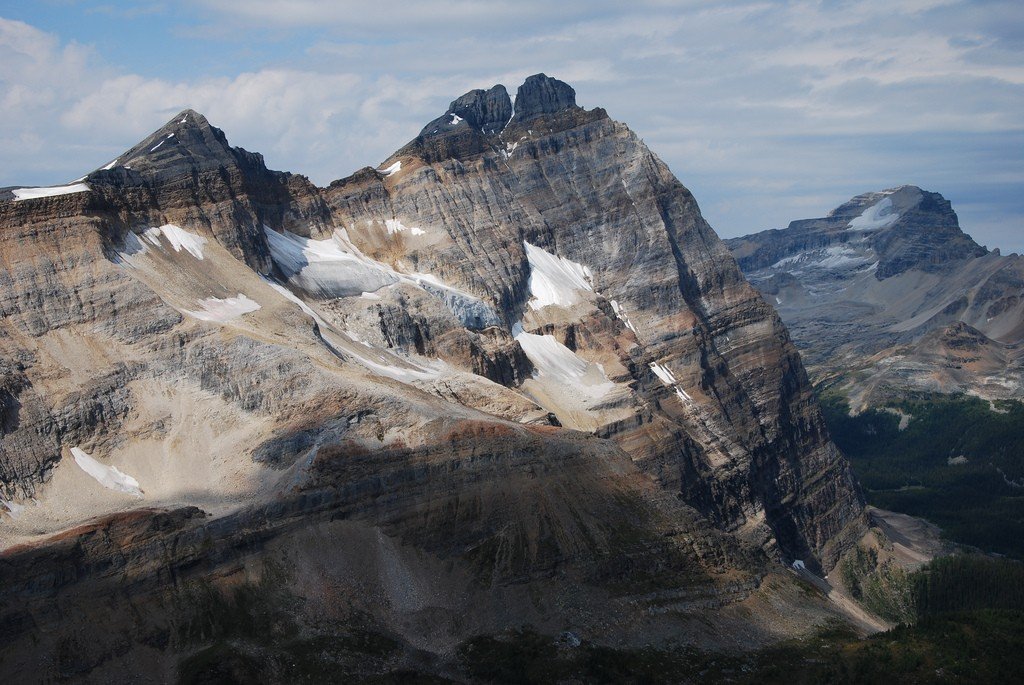
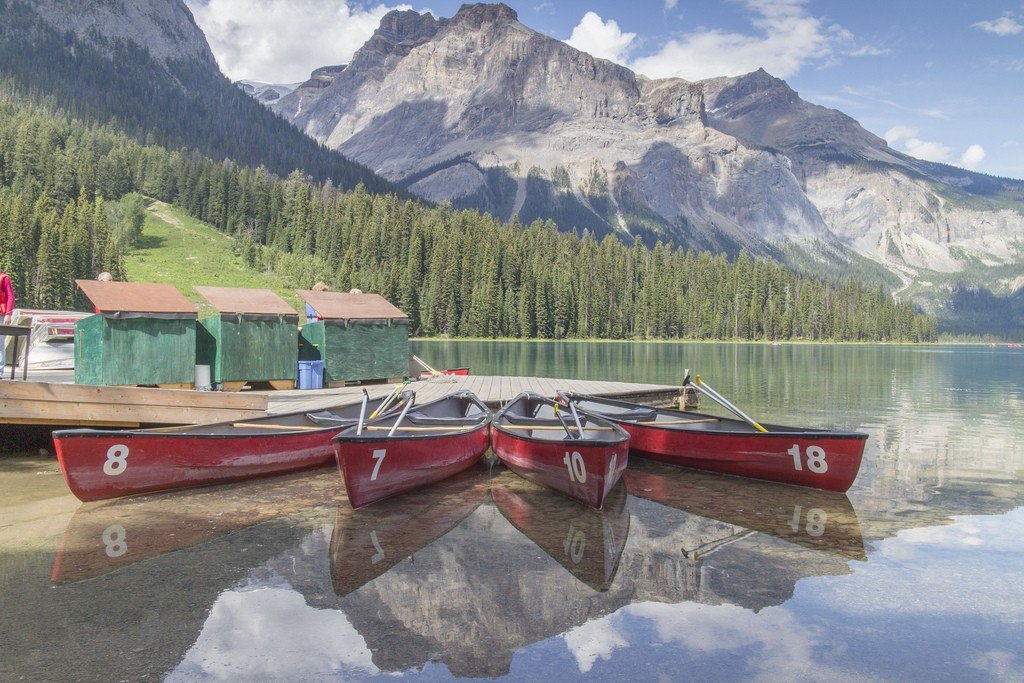
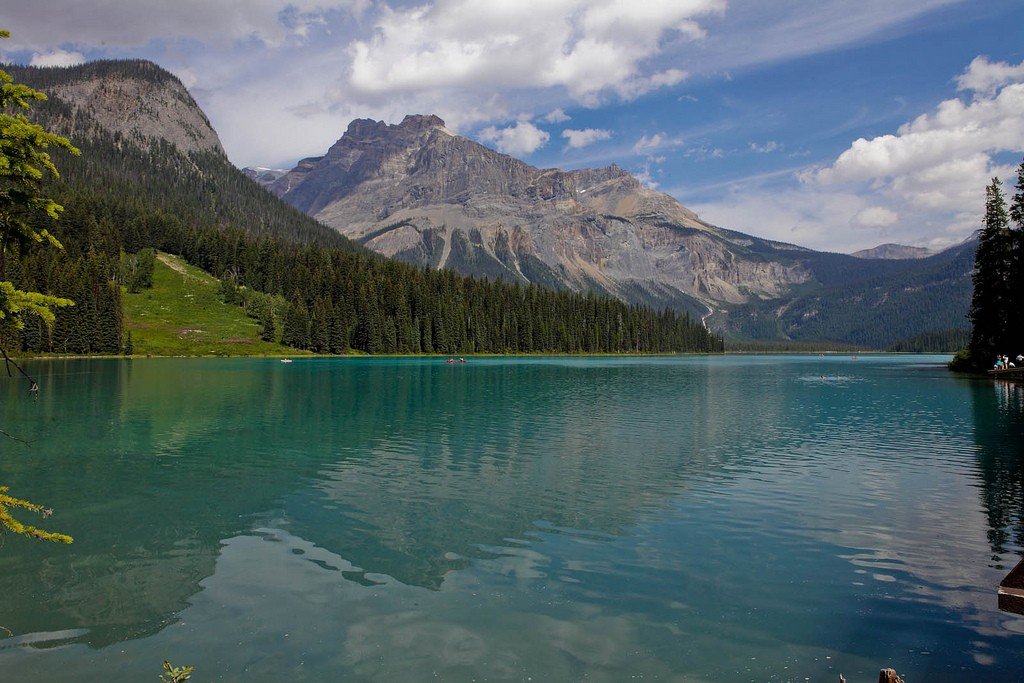
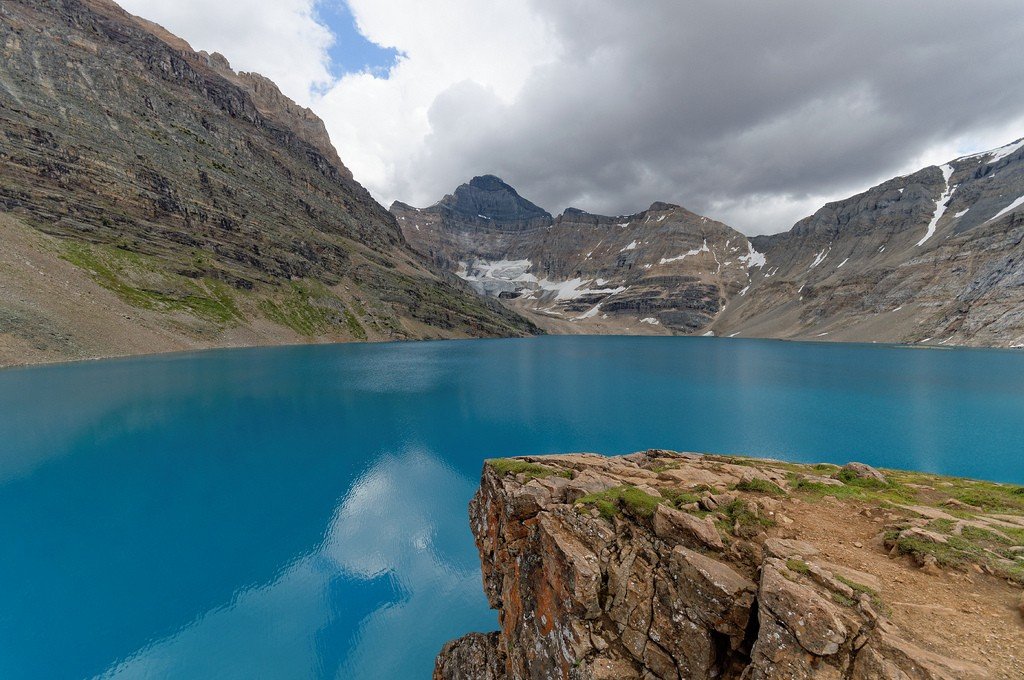
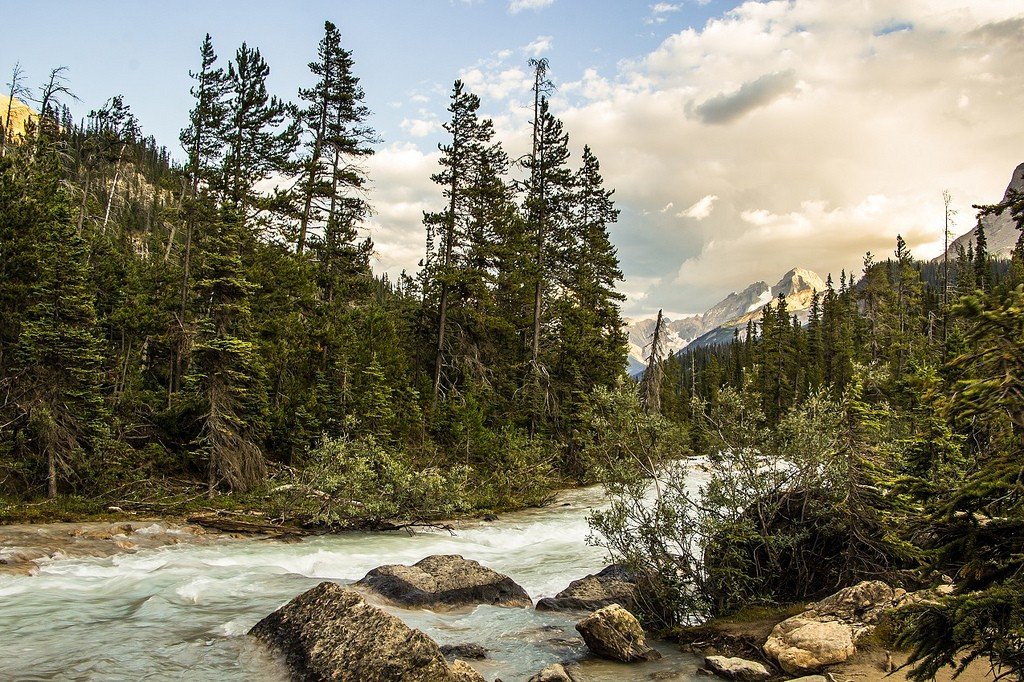
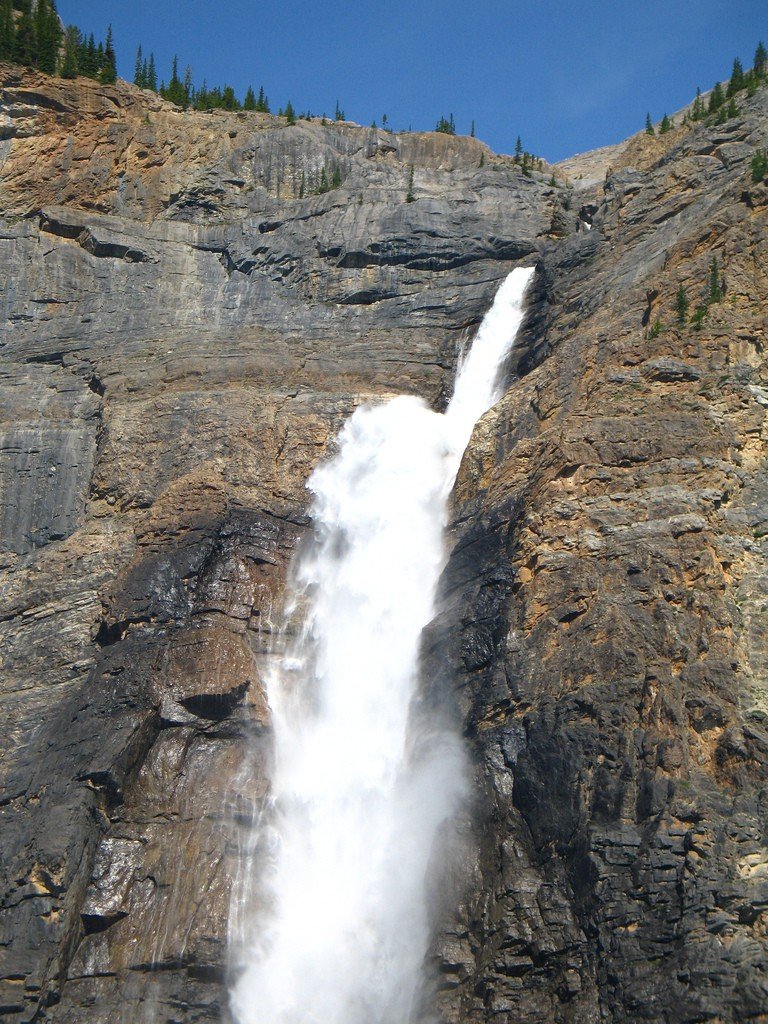
General Information
Follow the road to Emerald Lake; there is a magical tranquility here, with the mountains spectacularly reflected in the green water surface. The only secluded lodge on the shore doesn’t disturb the serene atmosphere. A scenic trail invites you on a two-hour walk through the forest, where you’ll see a variety of waterfowl, including ducks and loons, as well as small mammals.
Return to the Trans-Canada Highway and at the turnoff for the town of Field you will see the park’s information center. Drive another 6 km through pine forest in the Yoho Valley to reach Kicking Horse Campground. Thirteen kilometers after entering the valley, there is a sign on the right hand side for a short trail to the foot of Takakkaw Falls. The word “Takakkaw” means “magnificent” in the Cree language – an accurate definition of the water cascade flowing from beneath the Daly Glacier. Unlike many other waterfalls, this one is best viewed during the hot summer months, during the intense melting of the glacier. For a panoramic view, take the mile-long Icelain Trail, which begins south of the falls, from the Whiskey Jack Hostel.
.
On the way back, stop at the confluence of the Yoho and Kicking Horse Rivers to see the tunnels that have been tunneled into the mountain in a figure-eight shape. The lower spiral is clearly visible from the Trans-Canada Highway. The construction of these unique tunnels was necessary to overcome the steep elevation difference on the approach to Kicking Horse Pass. At the eastern exit of the park you will see the spot where geologist James Hector, a member of the 1858 expedition, was kicked by a pack horse, which is why the pass was named.
.